Building community in the classroom is really about answering one big question for every student: “Do I feel like I belong here, and does what I do matter?”
When that answer is yes, everything else becomes easier. Learning, behavior, even attendance.
Students take more risks because they feel supported, and they show up more fully because they know they are part of something bigger than themselves. A strong classroom community becomes the quiet engine behind motivation, focus, and resilience.
In this blog, we will talk about what building community in the classroom means, why it matters, and give you practical strategies and activities to build community you can use right away.
What is Building Community in the Classroom and Why It is Important
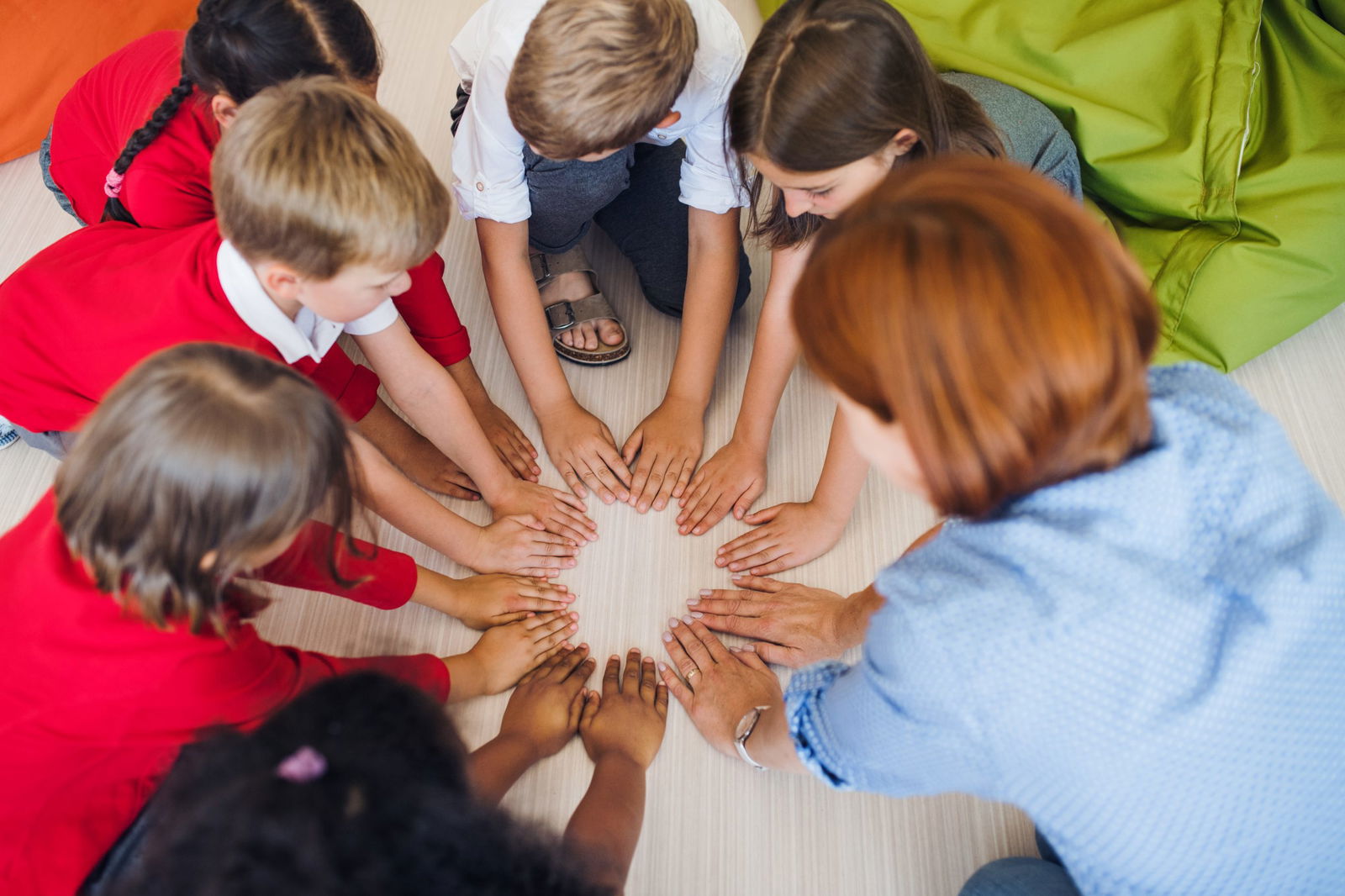
Building community in the classroom means intentionally shaping the class into a group where students feel known, respected, and responsible for one another’s learning.
It is more than “getting along.” A strong classroom community has a shared sense of belonging, a trusting relationships with peer and the teachers and the opportunities for every student to contribute and feel valued.
Why Building Community in the Classroom is So Important
A strong classroom community is just not nice to have. Several studies link a sense of belonging to concrete academic and wellbeing outcomes:
- A student’s sense of belonging predicts higher academic achievement, better attendance, and persistence in school.
- In college and secondary classrooms, stronger classroom community scores relate to higher perceived learning and achievement.
- Belonging protects mental health and increases resilience when students face challenges.
- When students feel connected to teachers and peers, engagement and social emotional outcomes improve.
In short, when students feel “this is my class, these are my people,” they are more likely to put in effort, take risks, and stay with difficult tasks.
Strategies & Activities for Building Community in the Classroom
Building community in the classroom is not something that happens through one activity. It grows through repeated choices in how you relate to students, how you structure learning, and how you invite them into the life of the class.
Think of it as a steady layering process. Each small move builds trust, shared responsibility, and a sense of belonging.
Below you’ll find key strategies for building community in the classroom along with matched activities that bring them to life in everyday teaching:
1. Foster strong teacher–student and peer relationships
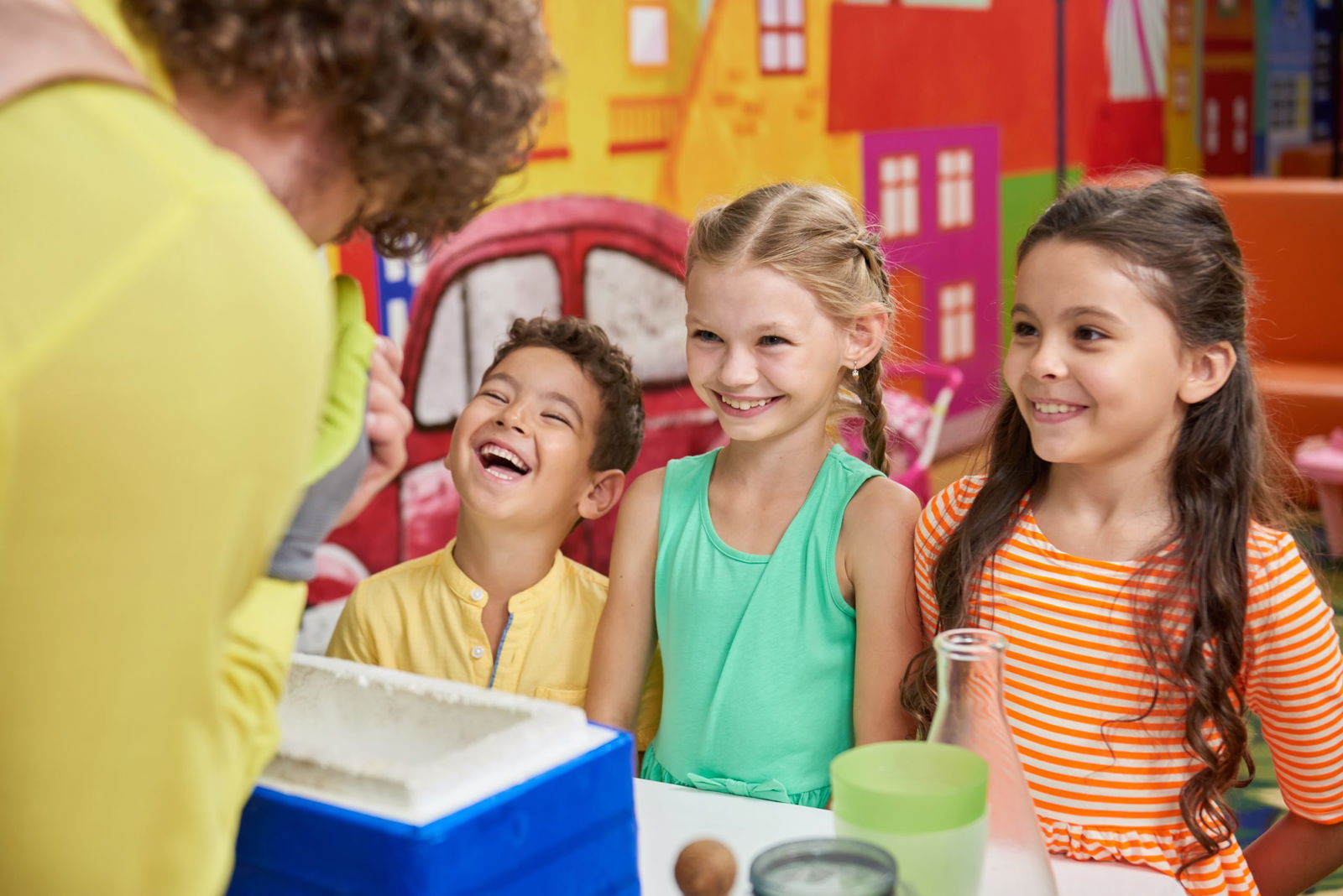
When students feel known, valued, and connected (both to their teacher and classmates), they are more engaged, better able to learn, and more likely to persevere. Research on sense of belonging shows that students who feel supported by teachers and peers report higher engagement and achievement.
Activity Ideas:
- Identity maps: Students draw a visual “About Me” map with hobbies, languages, family, learning strengths; then display and do a gallery walk so students see commonalities and differences.
- Partner interviews & introductions: Students interview a classmate and then introduce them to the class, shifting focus from presenting self to listening and representing others.
- Weekly check-ins: At the start of class ask a quick question (e.g., “One thing I’m proud of this week”) so students start strong and feel seen.
2. Co-create norms, rules, and routines
When students help shape the classroom’s norms and routines they feel ownership and belonging. This co-creation reduces the “us vs. them” dynamic and supports the sense of “we” in building community in the classroom.
Here is a quick example of how this can look:
| Step | What students do | Why it builds community |
|---|---|---|
| 🧠 Brainstorm | List what helps everyone feel respected and able to learn | Students see their ideas matter |
| 👥 Cluster | Group similar ideas and turn them into positive norms | Creates shared language |
| 🗳️ Voting | Vote on the top 4 norms to adopt | Builds ownership and responsibility |
Research highlights student participation in rule setting as a strong predictor of belonging.
3. Incorporate cooperative learning, not just group work

Research shows that shared goals, accountability, and positive interaction significantly improve social bonds and learning outcomes.
Cooperative learning strengthens community because students depend on one another to reach a shared goal. It requires structured roles, accountability, and collaboration.
Activities to match:
🗯️ Think-Pair-Share. A perfect, low pressure way to get all voices involved.
- Students think silently.
- Pair up to discuss ideas.
- Share with the class.
🧩 Jigsaw. Great for teamwork, speaking confidence, and peer teaching.
- Each group becomes an expert on one part of the material.
- New groups form where each expert teaches their part.
- Groups produce a final output together.
⚠️ Group problem solving. Give students different pieces of information so the solution only emerges through collaboration. This naturally reinforces interdependence and trust.
To group students effectively, check out Grouping of Students for Engaged Classrooms (Examples, Steps, Tools and Strategies).
4. Make student voice a regular feature of the class

Building community in the classroom grows when students feel heard. This does not require big projects. It often begins with small, consistent invitations.
Short sentence examples you can plug in anywhere:
- “Choose which example we work through today.”
- “What is one thing you want us to improve this week?”
- “Suggest one topic that connects this lesson to your world.”
Having the sentence samples above, you can incorporate your student voices in situations where you let them choose what activity to do, or having a suggestion box as your classroom’s idea bank.
When students see their ideas shaping the flow of class, motivation rises.
5. Build routines that center connection
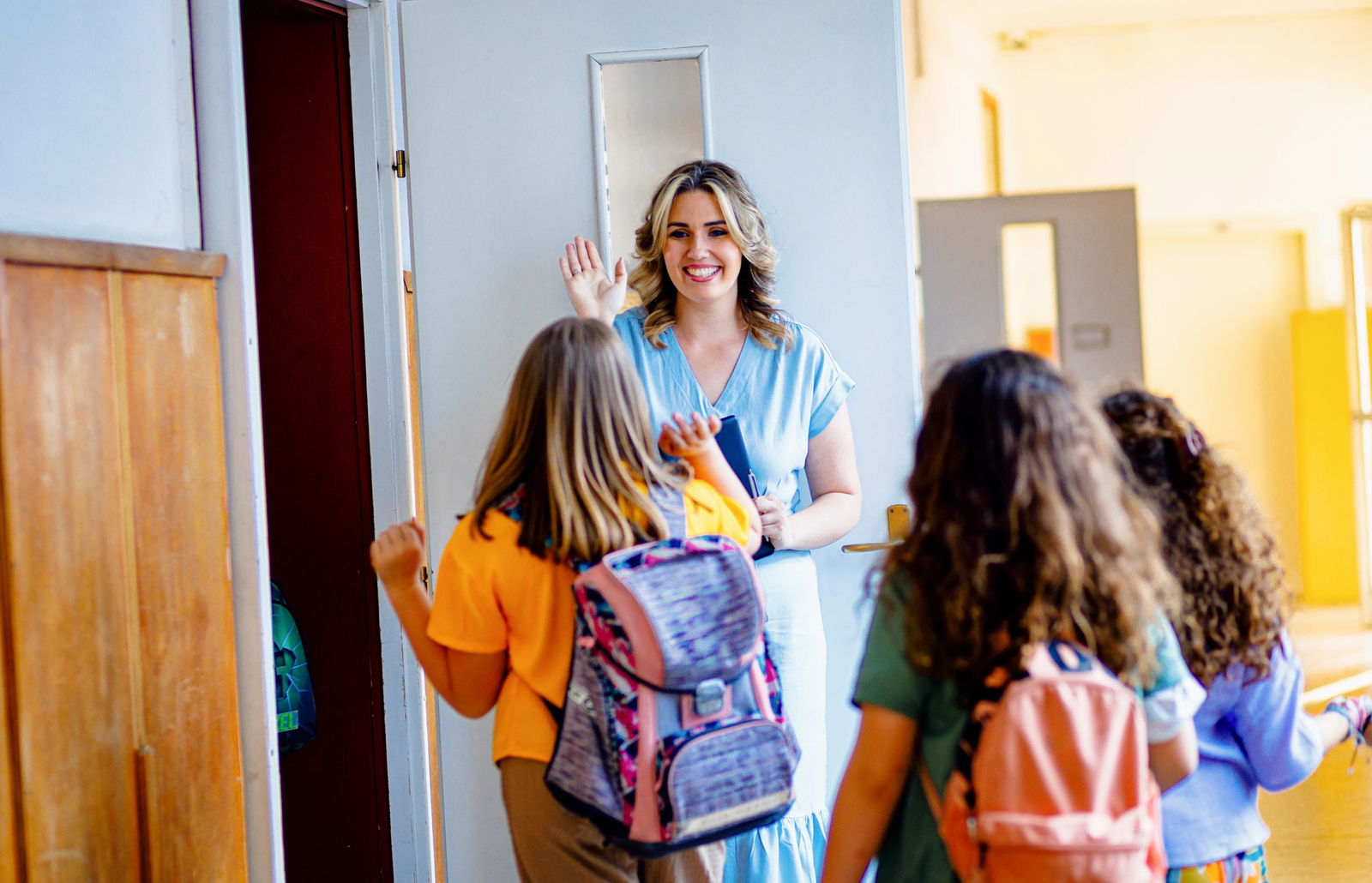
Predictable routines support emotional safety. Reflection strengthens classroom community awareness and helps students appreciate peers’ contributions.
A few examples teachers often rely on:
☀️Morning meetings to start the day with unity.
🎭Rose and thorn check ins where students share one success and one challenge.
🎤Shout outs: A few minutes for gratitude or positive recognition.
🤔After project reflections: “What did we do well together, and what will we improve next time?”
These routines take only a few minutes but create regular space for students to speak and be acknowledged. Research shows consistent community rituals increase students’ sense of being known and supported.
6. Watch for students who feel on the margins
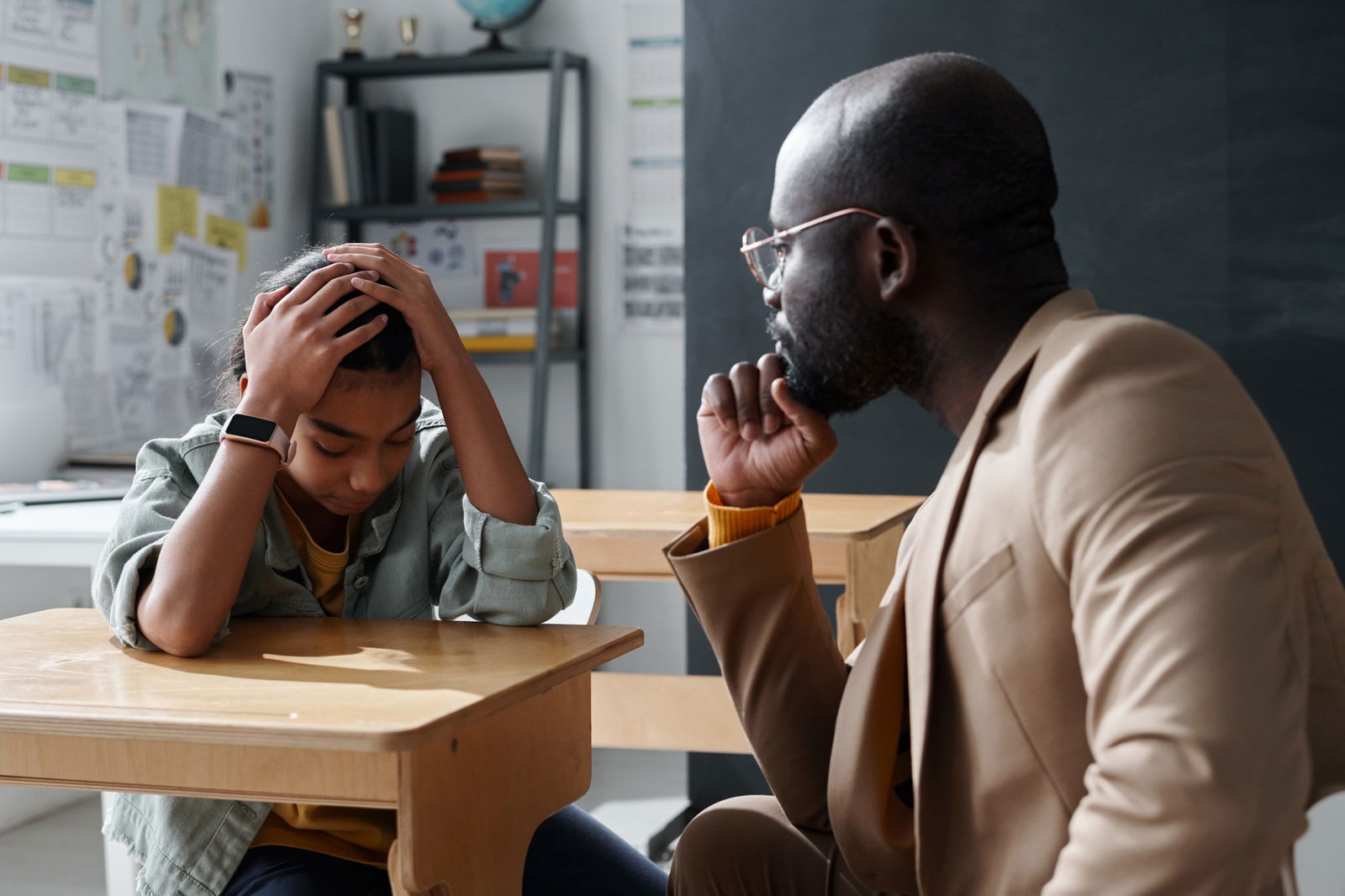
Building community in the classroom is only strong when everyone is part of it. Students who feel isolated often disengage academically and socially. Intentional inclusion strengthens belonging and peer trust.
Ways to support inclusion:
- Peer buddy system for new or quiet students.
- Mixed grouping during Jigsaw or problem solving so social circles expand.
- Quick one to one teacher check ins for students who seem withdrawn.
- Random partner selection to break fixed cliques and encourage diverse interaction.
You can also keep a simple mental checklist to check in on your students:
| Ask yourself | Why it matters |
|---|---|
| ✅ Who has not spoken today? | Helps you notice patterns early. |
| ✅ Who seems disconnected from group work? | Prevents quiet disengagement. |
| ✅ Who avoids eye contact or participation? | Signals emotional or social discomfort. |
This kind of attention helps ensure every student feels included in the community you are building.
If you're running out of ideas on how to approach your student who feel on the margins, read 250+ Check In Questions for Icebreakers and Group Activities.
How ClassPoint Helps with Building Community in the Classroom
If your goals building community in the classroom include more voices, more collaboration, and more shared responsibility, ClassPoint quietly supports all of that inside PowerPoint.
Most tools focus on delivering content, but ClassPoint focuses on connecting the people in the room. Here is how ClassPoint features naturally strengthen building community in the classroom:
🎯 Interactive Quizzes that give every student a voice
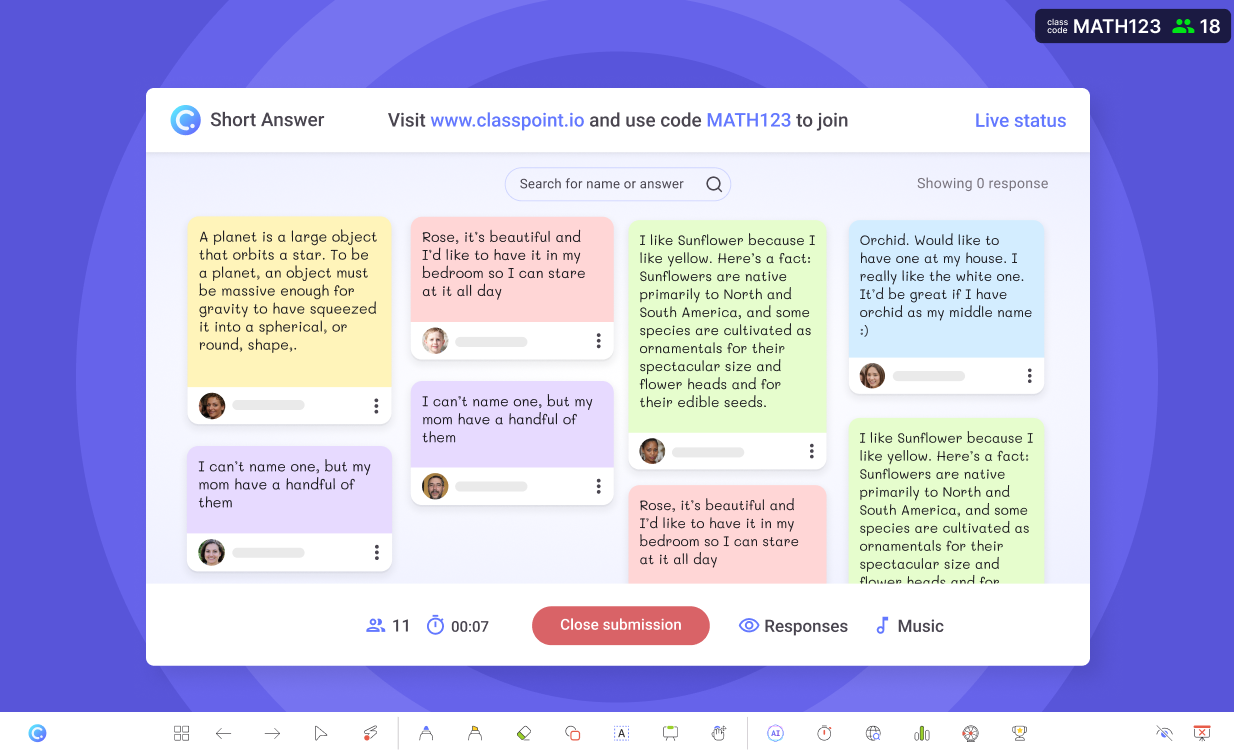
When every student can answer from their own device, participation shifts from a few confident volunteers to the entire class.
You hear from shy or quiet students. You surface diverse perspectives. You capture the thinking of everyone, not just the front row. These activities increase belonging because students see that their ideas matter.
Sample activities:
- Begin class with a Word Cloud around “What helps you feel safe to share ideas?”
- Use Short Answer for partner-based introductions such as “Share one thing you appreciate about your classmates this week.”
- Let students vote on shared norms through Multiple Choice when co creating class expectations.
🖼️Image Upload and Slide Drawing for shared expression

Visual sharing makes students feel known. With Image Upload and Slide Drawing, students can create and contribute in ways that go beyond text or speaking.
Use these tools for identity maps, class values posters, collaborative artworks or symbols, or jigsaw tasks where each group creates a visual summary of their assigned section
Displaying all submissions together helps students see common experiences and new perspectives.
🎡Random Name Picker for inclusive turn-taking
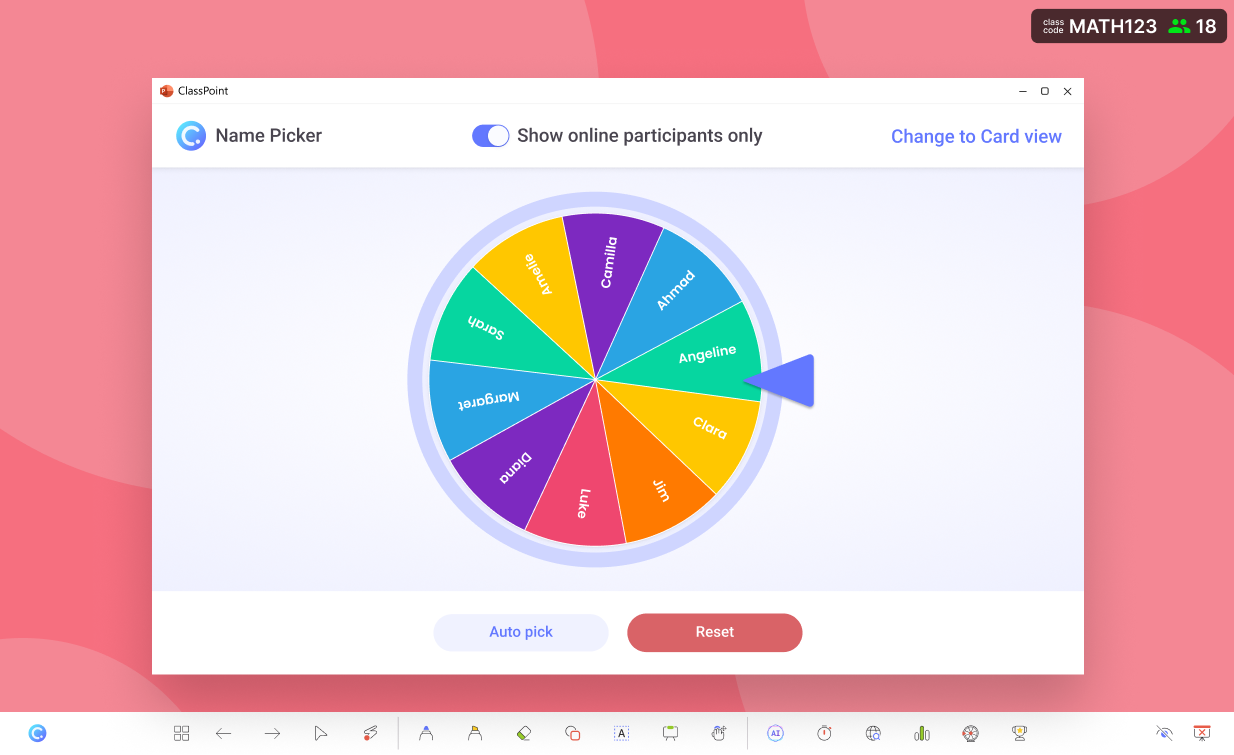
Healthy communities have balanced voices. The Random Name Picker supports fairness by ensuring that speaking time is shared intentionally.
When students see that everyone gets a turn, trust grows.
📊Quick Poll for classroom decisions

Building community in the classroom cannot exist without shared ownership. Quick Poll lets students make real decisions in seconds.
Examples:
- Vote on which activity format to use.
- Select the topic for the next group project.
- Choose which community or service project the class wants to pursue.
These small decisions build a culture where students feel the classroom belongs to them.
🎭Anonymous mode for psychological safety
Sometimes honesty requires privacy. Anonymous mode lowers pressure and makes it easier for students to share openly.
You can use it for emotional check ins, reflection after conflicts, and sensitive topics during Think-Pair-Share or class discussions.
Thankfully in ClassPoint, you can anonymize your students’ responses so your classroom creates a safe space where one’s vulnerability is respected.
👑Leaderboard to celebrate effort and collaboration
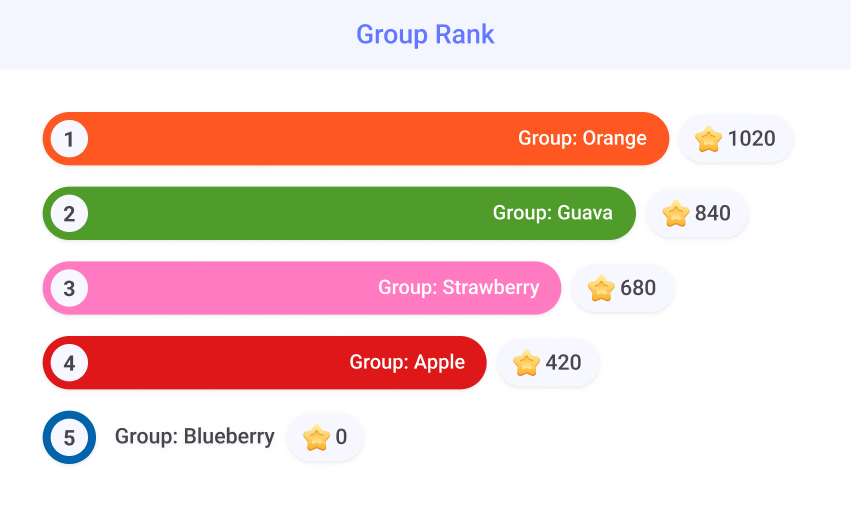
Leaderboards become community tools when you shift the focus from correctness to growth. Students feel recognized for effort, kindness, teamwork, and perseverance.
Here are its possible uses:
🏅Award points for successful group problem solving, not just right answers.
🏅Recognize groups that collaborated respectfully or helped others.
🏅Celebrate improvement across time rather than top scores.
This helps students see that building community in the classroom is something valuable.
FAQs
What is one of the biggest mistakes teachers make when building community in the classroom?
Trying to do everything at once. Community grows slowly and naturally. Instead of launching many activities, choose one or two practices and repeat them weekly. Students appreciate a few strong rituals more than many scattered efforts.
How early in the year should I start building community in the classroom?
Day one. Students start forming impressions immediately. Simple moves like learning names, co creating norms, and using icebreakers can signal that this class will be different.
What if my class is already difficult or divided? Is it too late?
It is not too late. Start small. Introduce one routine that prioritizes voice and listening, such as short weekly circles or structured partner talk. Acknowledge the current climate honestly, invite students to help reset norms, and build from there.
Does building community in the classroom take away from academic time?
The research suggests the opposite. Time spent on relationships, norms, and cooperative structures pays off in higher engagement, smoother transitions, and better academic outcomes.
How do I continue building community in the classroom if I teach multiple classes a day?
Focus on micro routines that can be repeated across periods. Examples include:
– A two minute daily opener
– A quick end of class reflection
– Consistent greeting and closing rituals
These short moments build familiarity and trust even if you see each class briefly.
Can building community in the classroom help with classroom management?
Yes. When students feel connected to the teacher and each other, they are more likely to follow routines and less likely to disrupt learning. Positive relationships reduce power struggles and create shared responsibility for classroom climate. Community is prevention, not reaction.
Can technology support building community in the classroom?
Yes. Tools that allow every student to participate equally help remove barriers. Polls, shared whiteboards, anonymous submissions, and collaborative digital tasks encourage participation from students who may hesitate to speak aloud. The key is using tech to amplify student voice, not replace interaction.
